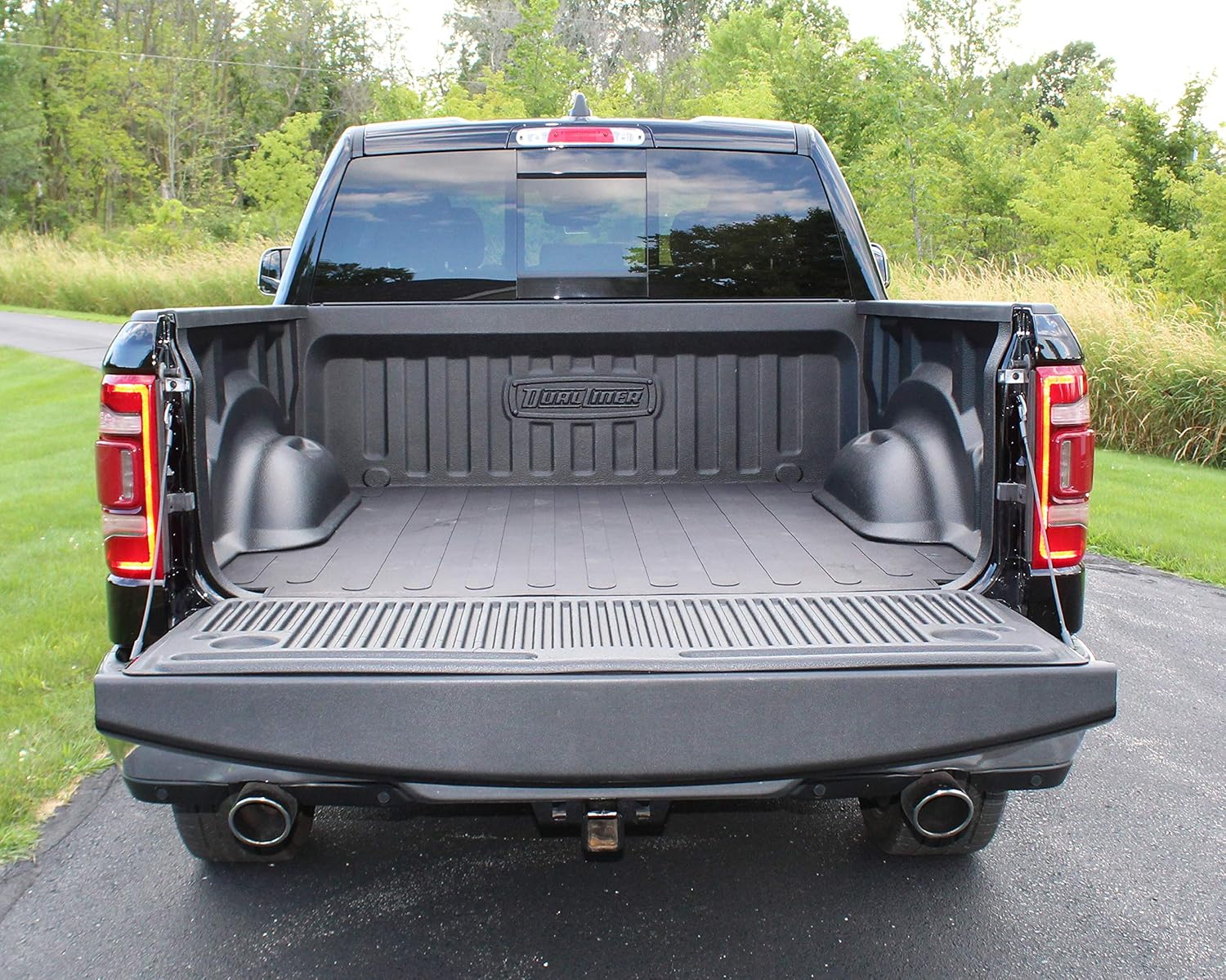When it comes to using a pickup truck for hauling dirt, tools, mulch, or even gravel, cleaning out the bed afterward can be a regular and sometimes frustrating task.
Some trucks are designed with easy-to-clean features like smooth bed liners and accessible corners, while others come with tight crevices and awkward ridges that trap debris and moisture.
Here’s a look at five pickups that make bed cleanouts a breeze, and five that tend to be more frustrating to maintain.
Pickups With the Easiest Bed Cleanouts
Whether you’re hauling mulch, gravel, drywall scraps, or last weekend’s regretful DIY leftovers, the job isn’t done until the bed’s cleaned out. For pickup truck owners, that final step can either be a quick sweep—or a backbreaking mess.
Not all truck beds are created equal when it comes to cleanout ease. From smart bed liners and tailgate designs to factory spray-ins and clever drainage systems, some pickups make the chore less of a pain. In this guide, we break down the trucks that keep your payload moving—and your cleanup simple.
1. Ford F-150 (With Factory Spray-In Bedliner)
The Ford F-150, particularly when equipped with the factory spray-in bedliner, is one of the easiest trucks to clean out. The smooth, non-stick liner surface resists dirt adhesion, and the wide, boxy bed design eliminates hard-to-reach areas.
The drain holes are well-positioned, and the tailgate opening is flat and flush, allowing debris to be swept or hosed out effortlessly. Ford’s flagship pickup operates on a “have it your way” mentality, offering buyers a wide array of powertrains, cab styles, and customization possibilities.
Whether shoppers want a gas-powered engine, a hybrid setup, or a fully electric drivetrain, the F-150 can be built to meet nearly any demand. Entry-level trims are suitably outfitted for commuting and jobsite use, while upper-tier versions are packed with premium features and upscale finishes.
There are also dedicated off-road trims engineered for everything from rugged trail runs to aggressive rock crawling. Ride quality across the F-150 lineup is consistently solid, regardless of whether the bed is loaded.
Versions equipped with the twin-turbocharged V-6 deliver strong towing and hauling performance, while the Raptor R ups the ante with a supercharged V-8 and a chassis built to absorb serious punishment. The Tremor model takes a more balanced approach, blending real off-road ability with everyday comfort.
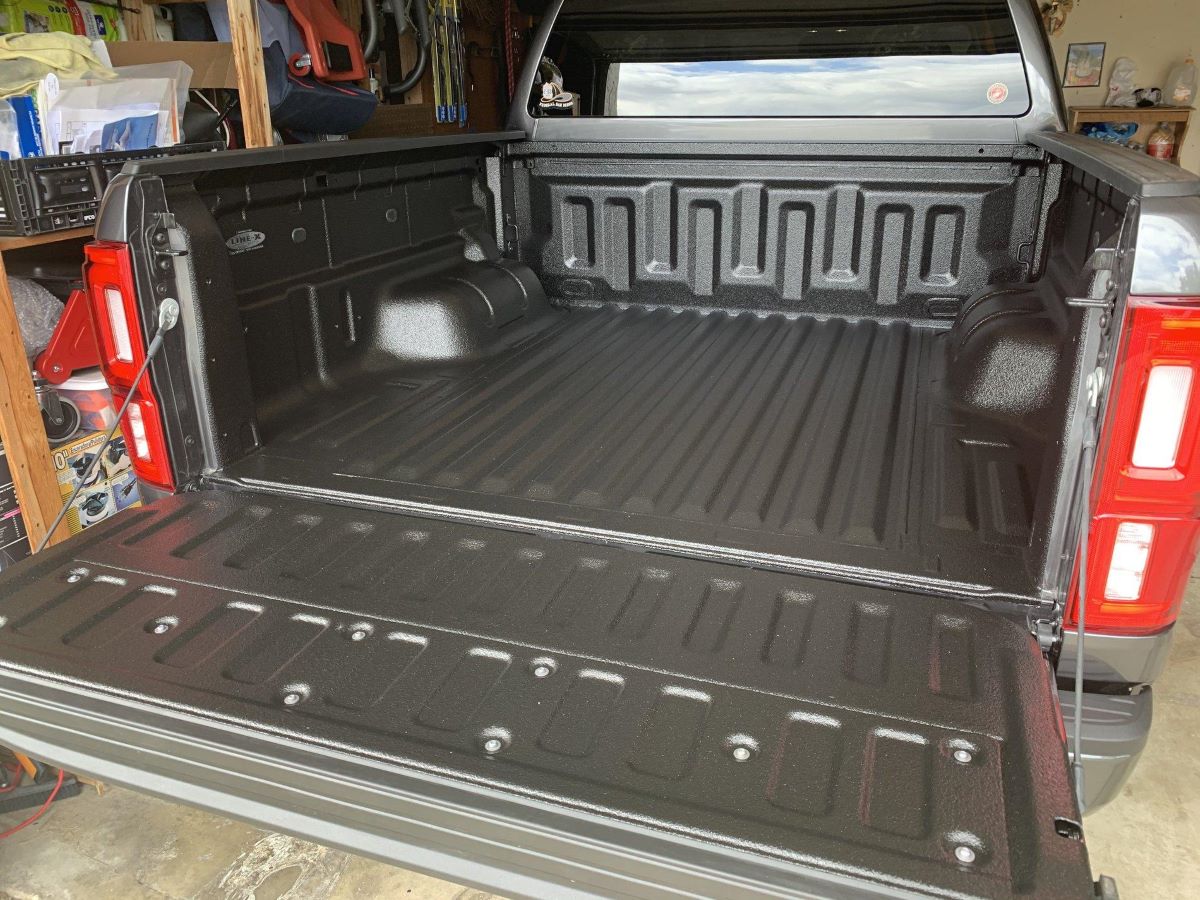
Meanwhile, Ford has also catered to street truck fans by introducing the F-150 Lobo—an on-road-focused variant that follows in the footsteps of the smaller Maverick Lobo. Inside, the truck offers large digital displays, flat floors that help with cargo transport, and a retractable gear shifter that maximizes versatility.
Despite its strengths, the F-150 isn’t without flaws that potential buyers should consider. First, while traditional pickup enthusiasts may not mind, Ford has played it safe with the F-150’s exterior styling—choosing familiarity over innovation.
Second, the hybrid variant is undermined by inconsistent brake pedal response, which detracts from an otherwise impressive setup. Lastly, the best versions of the F-150 come with a steep price tag, creating a significant gap between the affordable base models and the well-equipped higher trims.
Still, these criticisms do little to dull the F-150’s overall appeal. We’re not thrilled that Ford is cutting features from some lower trims for 2025, though the company has adjusted the base price downward in line with the feature reductions.
Even with those changes, the F-150 remains a remarkably versatile truck with a sprawling lineup that continues to make it one of the most compelling choices in the segment.
Also Read: Top 12 Cars That Run Like New Even After 15 Years With Minimal Maintenance
2. Honda Ridgeline
The Honda Ridgeline offers a composite bed that’s not only dent-resistant but also extremely easy to clean.
There are no wheel well protrusions to trap dirt, and its built-in drain plugs allow you to hose the entire bed down like a bathtub. Bonus: it includes a lockable in-bed trunk that’s equally simple to rinse out and maintain.
The Honda Ridgeline brings a compelling mix of features to the table. Thanks to its unibody design and fully independent suspension, it offers a smoother, more engaging driving experience than traditional body-on-frame trucks.
Its spirited V-6 engine delivers brisk acceleration, though towing capability doesn’t quite match up to rivals like the Chevrolet Colorado, Ford Ranger, and Toyota Tacoma.
While the Ridgeline’s five-foot bed is on the smaller side, it makes up for it with clever utility—there’s a roomy underfloor storage compartment that doubles as an ice chest, plus a versatile two-way tailgate.
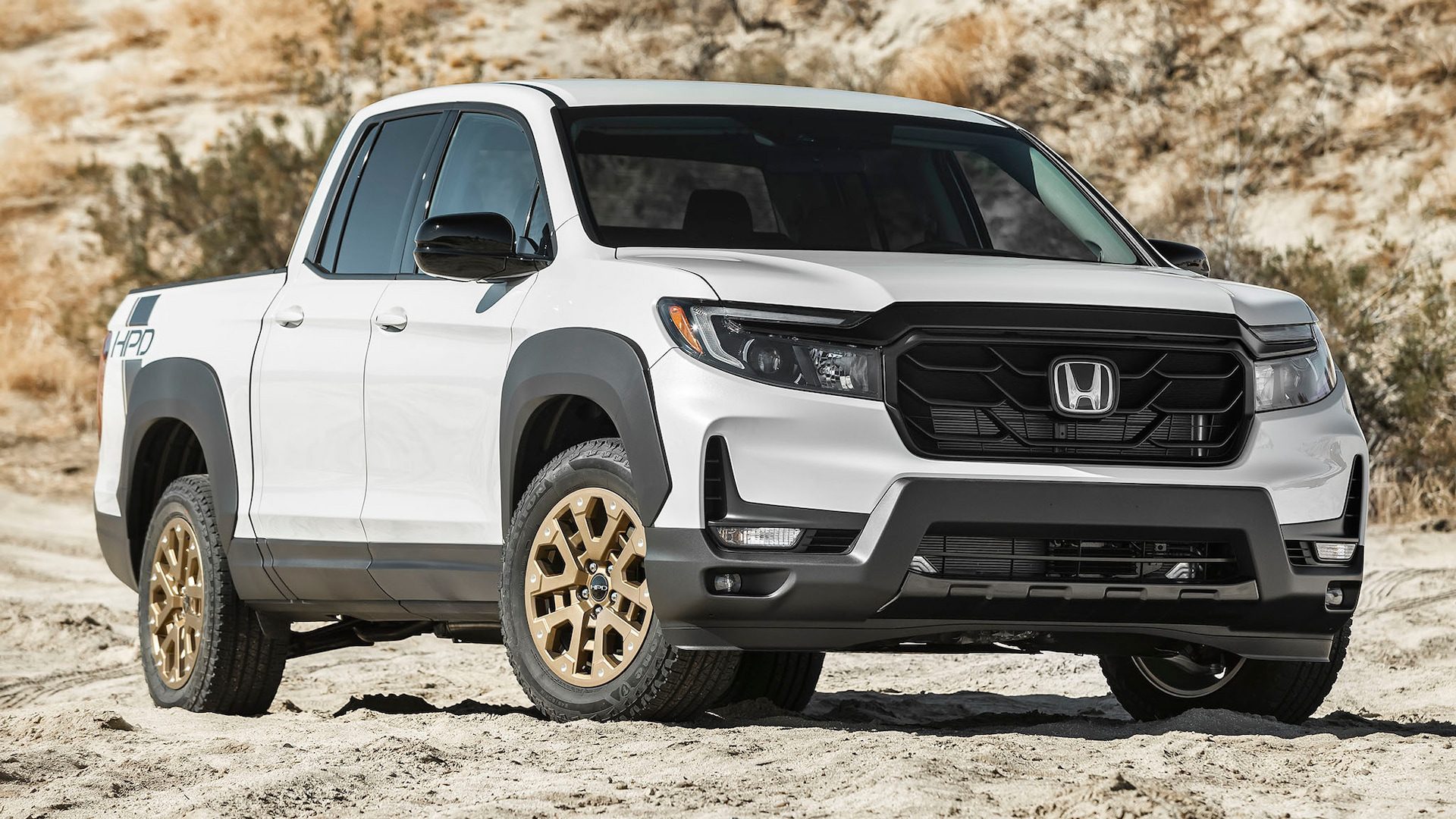
For 2024, the cabin received a significant upgrade with larger screens, wireless smartphone mirroring, and expanded center console storage, all of which make it a more pleasant space to be in.
Judging from our experience with the 2024 Honda Passport TrailSport, we’re not expecting the Ridgeline’s most rugged trim to be a hardcore off-roader. That said, it should be more capable on light trails, thanks to enhancements like better tires, a retuned and lifted suspension, and added underbody protection, among other tweaks.
Looking ahead, a full redesign of the Ridgeline may not be far off—if Honda chooses to move in that direction. While the interior is starting to feel a bit dated compared to newer Honda models, the truck still stands strong as a practical and well-rounded midsize pickup.
All Ridgeline variants are powered by a 3.5-liter V-6 that produces 280 horsepower and 262 lb-ft of torque, paired with a nine-speed automatic transmission and standard all-wheel drive. In our tests, the 2024 TrailSport model sprinted from 0 to 60 mph in just 6.2 seconds, making it the fastest Ridgeline we’ve tested to date.
As anticipated, the 2025 model maintains the same fuel economy ratings as the previous year. Most trims are rated at 18/24 mpg city/highway, while the TrailSport comes in slightly lower at 18/23 mpg.
3. Toyota Tundra (With Composite Bed)
The new-generation Toyota Tundra comes with an optional composite bed that is incredibly user-friendly for cleaning.
It resists scratches and has a uniform, flat surface with no deep ridges. Water and debris slide off easily, and cleanup takes just minutes with a hose or broom.
The Toyota Tundra serves as the brand’s full-size pickup, offered in two cab configurations, three bed lengths, and with either rear- or four-wheel drive. Under the hood, buyers have two turbocharged V6 options to choose from—one of which integrates a hybrid system that places an electric motor between the engine and transmission.
With a maximum towing capacity of 12,000 pounds, the Tundra holds its own against competitors in the segment. Still, its real strength lies in its reputation as a solid, well-rounded truck backed by modern technology and a comprehensive suite of safety features.
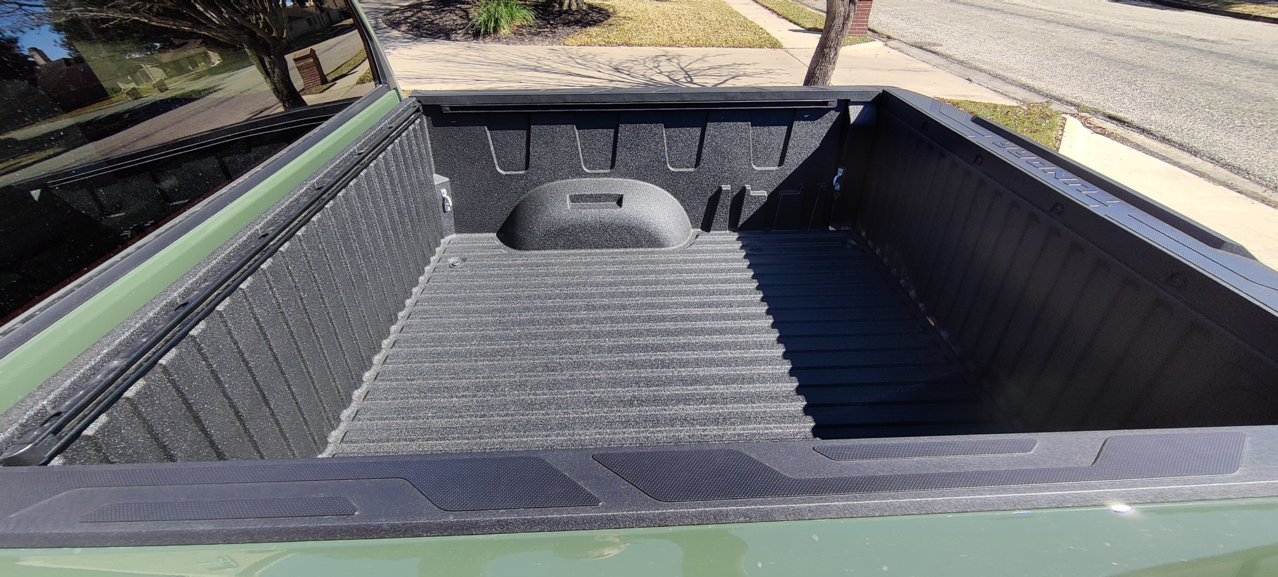
Based on a yearly estimate of 15,000 miles with a 55/45 city-to-highway driving split—and regular unleaded priced at $3.12 per gallon in North Dakota—the monthly fuel cost for the 2025 Toyota Tundra SR 4dr Double Cab SB (3.4L 6cyl Turbo 10A) is projected at $193. That compares favorably to the $226 monthly average among large trucks.
The 2025 Tundra lineup spans everything from no-nonsense work trucks to high-spec luxury models. Even the entry-level SR trim includes essential modern features like adaptive cruise control, Apple CarPlay, and Android Auto.
Moving up to the SR5 adds access to a 14-inch touchscreen display and includes the towing package as standard equipment. At the top end of the lineup, the off-road-ready TRD Pro and the upscale Capstone trims come standard with the high-output hybrid powertrain and four-wheel drive.
The TRD Pro delivers serious off-road capability, thanks to a lifted suspension system that includes 2.5-inch Fox shocks, robust skid plates, and an electronically locking rear differential.
On the luxury end, the Capstone offers a full suite of high-end appointments like premium leather seating, power-deployable running boards, a cargo step, and sound-dampening glass for a quieter cabin experience.
4. Chevrolet Silverado 1500 (Spray-In Bedliner)
The Chevy Silverado 1500 with a factory spray-in bedliner offers excellent resistance to grime and dirt buildup. Its design emphasizes wide floor panels and minimal grooves.
Debris can be swept straight out the tailgate, and the corrosion-resistant liner means you don’t have to worry about rust from residual moisture.
The 2025 Chevy Silverado 1500 delivers an impressive lineup of gas and diesel engine options, tailored to meet a variety of driving needs—from daily commutes to heavy-duty workloads. Engine choices include the fuel-efficient TurboMax™ engine, two robust V8s, and the torque-heavy Duramax turbo diesel.
Depending on the selected engine, configurations come with rear-wheel drive (2WD) or four-wheel drive (4WD), paired with either an eight- or ten-speed automatic transmission. Each setup is engineered to handle a wide range of performance expectations, whether that’s hauling, towing, or cruising city streets.
The 5.3L EcoTec3 V8 produces 355 horsepower and 383 lb.-ft. of torque, achieving 17 city / 21 highway MPG. At the top end, the 6.2L EcoTec3 V8 cranks out 420 horsepower and 460 lb.-ft. of torque, rated at 16 city / 20 highway MPG. The 2.7L TurboMax pairs with an eight-speed automatic transmission, while all other engines are mated to a ten-speed automatic.
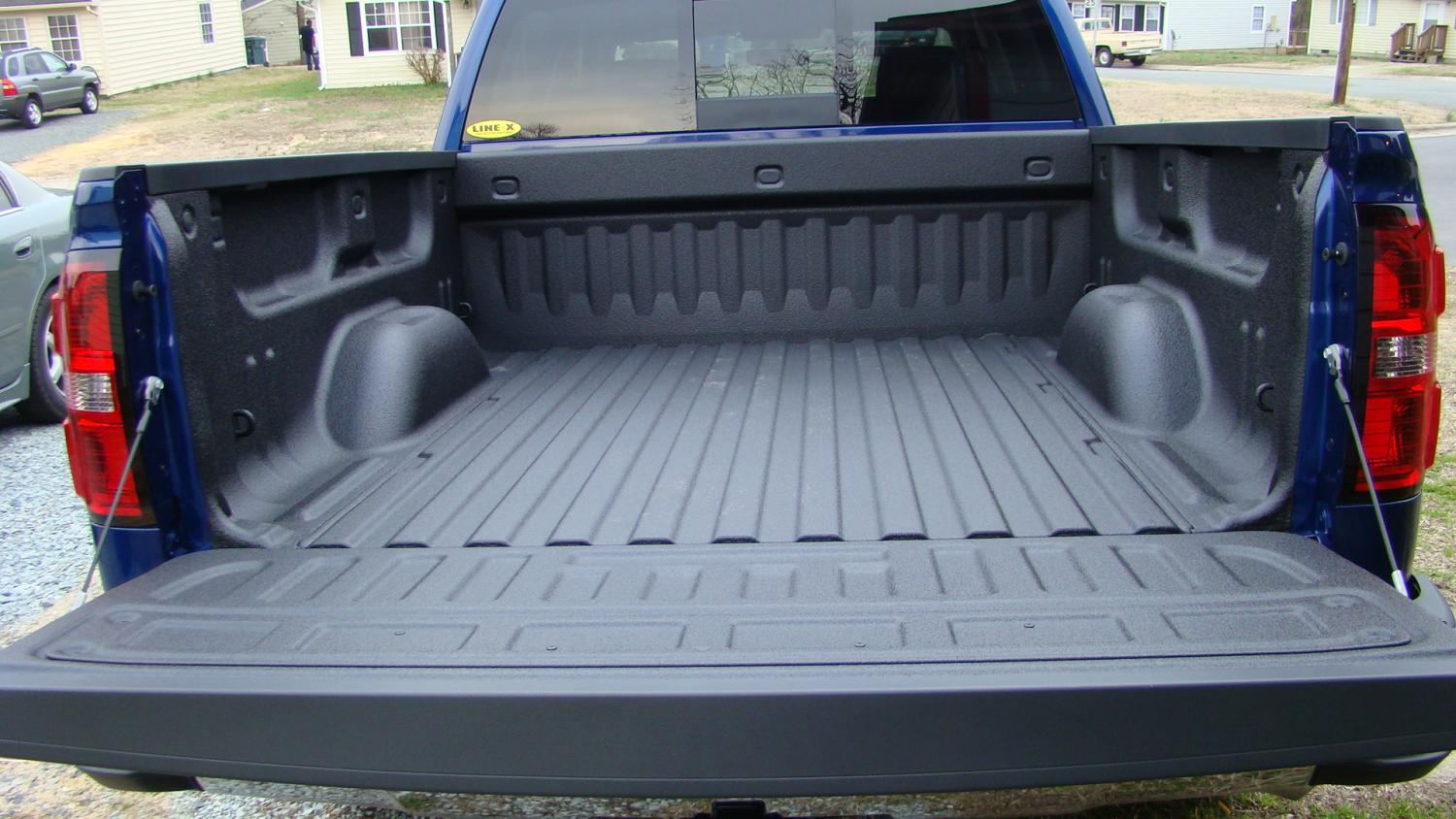
When it comes to towing and payload capacity, the Silverado 1500 proves itself a capable workhorse. Properly equipped with the 6.2L V8 engine and Max Trailering Package, it can tow up to 13,300 pounds.
Those seeking lighter-duty performance may opt for the 2.7L TurboMax, which offers a maximum payload of 2,260 pounds. The 5.3L EcoTec3 V8 supports up to 11,300 pounds of towing and 2,180 pounds of payload.
Meanwhile, the 3.0L Duramax turbo diesel I6 matches the 6.2L’s top towing capacity of 13,300 pounds and delivers a payload capacity of up to 1,970 pounds, depending on the configuration. Towing and payload figures vary by cab, bed length, drive type, and equipment packages, with the Max Trailering Package essential for achieving peak numbers.
The 2025 Silverado 1500 also offers tremendous flexibility across its trim lineup, allowing buyers to tailor performance to their specific needs. Whether choosing a basic work-ready WT model or a premium High Country edition, customers can select from multiple engine options.
The 2.7L TurboMax is available on the WT, Custom, Custom Trail Boss, LT, RST, and LT Trail Boss trims. The 5.3L EcoTec3 V8 can be selected for the WT, Custom Trail Boss, LT, RST, LT Trail Boss, LTZ, and High Country. The high-output 6.2L EcoTec3 V8 is offered on RST, LT Trail Boss, LTZ, High Country, and ZR2 trims.
Finally, the 3.0L Duramax turbo diesel I6 is accessible on Custom Trail Boss, LT, RST, LT Trail Boss, LTZ, High Country, and ZR2 models. With such a broad range of configurations and capabilities, the 2025 Chevy Silverado 1500 stands as a versatile and powerful choice in the full-size truck market.
Also Read: 5 Trucks with the Cheapest Brake Pad Replacements and 5 with the Priciest
5. GMC Sierra CarbonPro Bed
GMC’s Sierra lineup includes the CarbonPro bed made from carbon fiber composite, which is both ultra-light and practically impervious to damage.
It doesn’t dent, doesn’t corrode, and the material’s slick surface makes it simple to hose off. The bed also avoids the narrow channels that trap dust or gravel in traditional steel designs.
The GMC Sierra 1500 is offered with four engine choices, two transmission options, and either rear-wheel or four-wheel drive. The base engine is a turbocharged 2.7-liter four-cylinder producing 310 horsepower and 420 pound-feet of torque, paired with an eight-speed automatic transmission.
In addition to the base engine, buyers can choose between two familiar V-8s: a 355-horsepower 5.3-liter and a 420-horsepower 6.2-liter. A torque-rich light-duty diesel six-cylinder rounds out the lineup, delivering 305 horsepower and 495 pound-feet of torque.
These three engines are all paired with a ten-speed automatic transmission. The Sierra 1500 can also be equipped with adaptive dampers and wheels up to 22 inches in size. While the standard Sierra doesn’t ride as smoothly as the Ram 1500, it remains composed, offering responsive steering and minimal body roll, making for an impressive driving experience.
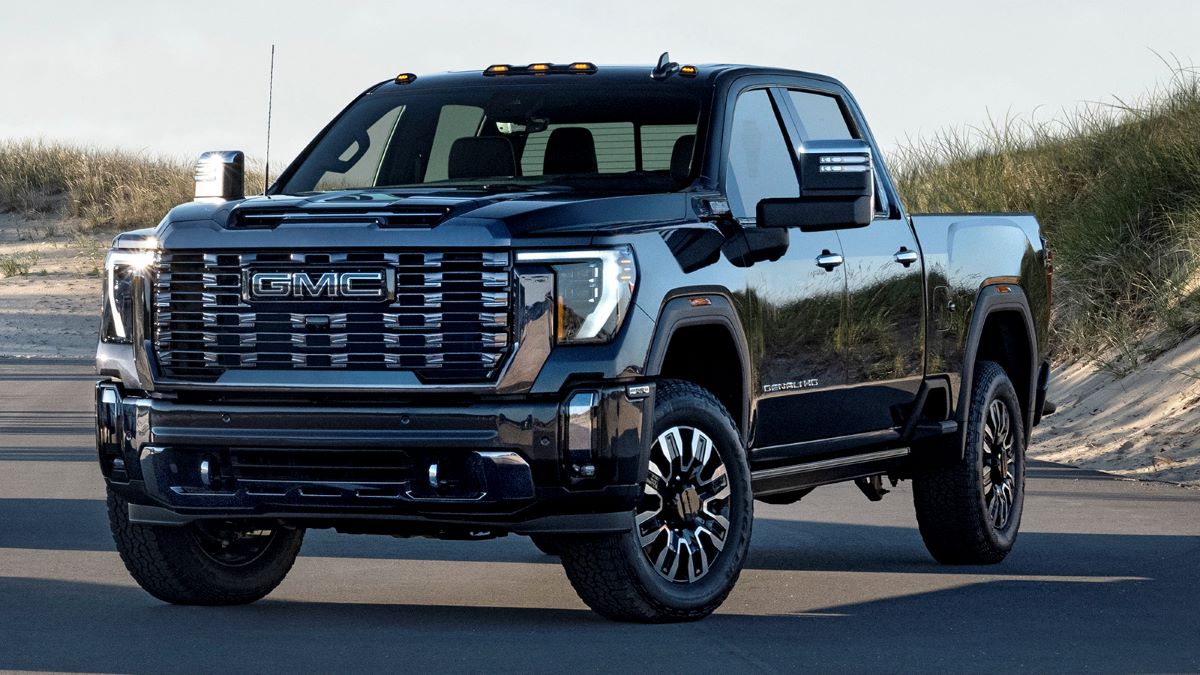
Although the Sierra doesn’t quite match the high-flying off-road prowess of the Ford F-150 Raptor, GMC offers two legitimate off-road-focused variants. The AT4 trim comes equipped with a 2.0-inch suspension lift and rugged, trail-ready hardware.
Meanwhile, the AT4X shares several off-road features with the Silverado ZR2, including spool-valve dampers, electronic-locking front and rear differentials, extra skid plates, and aggressive off-road tires mounted on black 18-inch wheels. For those seeking even more capability, the AT4X AEV package includes a steel front bumper with an integrated winch, AEV 18-inch wheels, and steel rock sliders.
In terms of performance, the Sierra doesn’t disappoint. At the test track, a fully loaded Denali Ultimate model with the 6.2-liter V-8 accelerated from 0 to 60 mph in just 5.4 seconds.
While the Sierra hasn’t been tested with the other engines, similar testing with the mechanically related Chevy Silverado offers insight. The Silverado equipped with the 5.3-liter V-8 reached 60 mph in 6.1 seconds, and the diesel-powered variant did it in 6.8 seconds.
Towing and hauling are essential capabilities in a full-size pickup, and the Sierra meets expectations. When properly equipped, it can tow up to 13,300 pounds and carry a payload of up to 2,530 pounds. Fuel economy varies significantly depending on body style, chassis length, bed size, and powertrain.
For the most efficient setup, the optional diesel engine is the best bet, offering up to 23 mpg in the city and 29 mpg on the highway. However, most Sierra models, particularly the upscale Denali trims, will be outfitted with the 6.2-liter V-8. When equipped with four-wheel drive, this engine is estimated to deliver 15 mpg city and 20 mpg highway.
Pickups With Narrow Crevices That Trap Dirt
Owning a pickup means getting dirty—no problem there. But what is a problem? When that dirt refuses to leave. Some trucks come with tight seams, awkward panel gaps, and hard-to-reach corners that act like dirt magnets.
Over time, those narrow crevices collect everything from dust and sand to caked-on mud, making routine cleaning a tedious grind. In this article, we spotlight the pickup models most notorious for trapping grime in the smallest places—because sometimes, it’s not the payload that weighs you down, it’s the cleanup that follows.
1. Nissan Frontier
The Nissan Frontier, especially older models, suffers from a bed design with deep ridges and tight wheel well contours that make cleaning tedious.
Debris tends to accumulate in the corners and under the tie-down rails. Without a liner, the exposed metal also makes it prone to rust if moisture gets trapped in the crevices.
For the 2025 model year, Nissan has updated the Frontier with more standard features across the lineup, though those upgrades come with higher prices compared to the 2024 model.
The base King Cab S 4×2 now starts at $33,560, which is $1,540 more than last year’s version. Despite the price increase, the added equipment brings more value. New standard features include a telescopic steering wheel, a sliding rear window, and a sunglasses holder integrated into the overhead console.
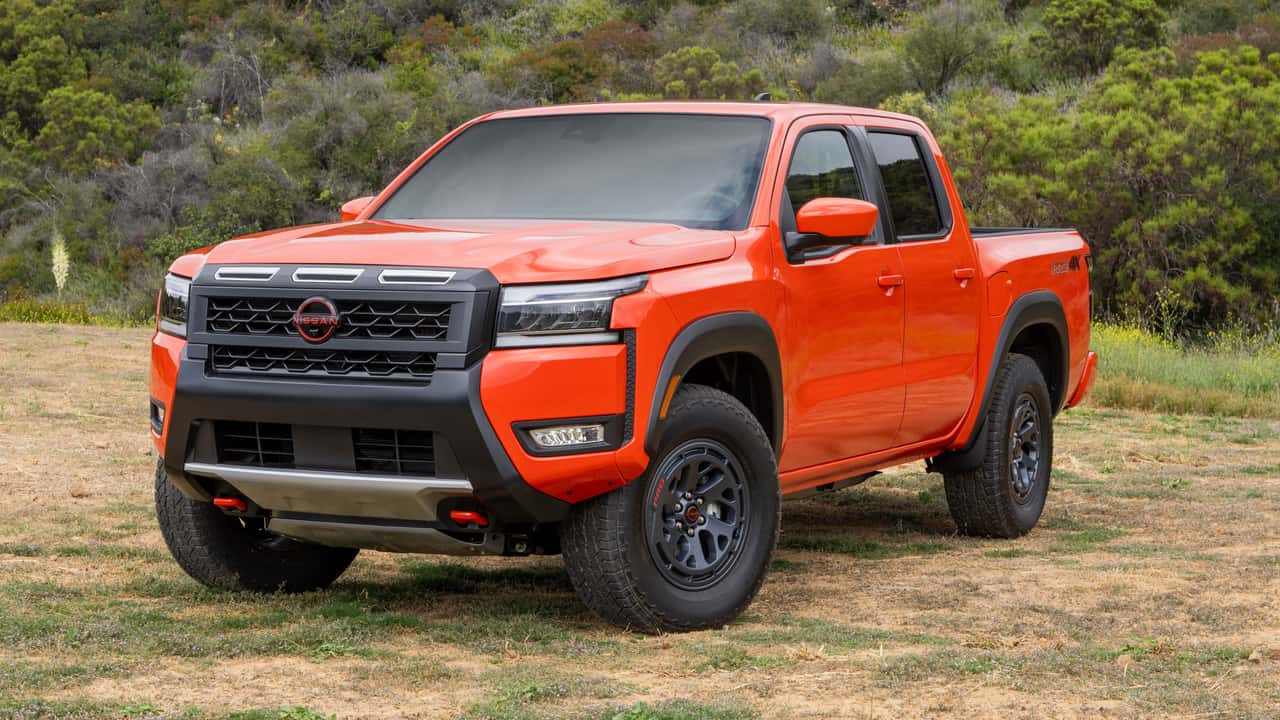
In terms of performance, the Frontier continues to use its familiar 3.8-liter V-6 engine, producing 310 horsepower and 281 pound-feet of torque, but towing capacity is now up by 500 pounds, bringing the new total to 7,150 pounds.
For 2025, SV trims and above now come standard with a larger 12.3-inch infotainment system that supports wireless Android Auto and Apple CarPlay. These models also include a six-way power driver’s seat, which now features two-way power lumbar support to improve comfort.
Additional equipment updates include 17-inch wheels as standard on the SV trim, while the Pro-X, Pro-4X, and SL trims now come equipped with a four-way passenger seat.
For 2025, Nissan has also expanded availability of the long-wheelbase six-foot bed to include not just the SV trim but also the Pro-4X and SL, at an added cost of $500, regardless of trim level. The updated 2025 Frontier is scheduled to go on sale later this summer.
2. Ram 1500 (Steel Bed Without Liner)
While the Ram 1500 offers great payload performance, the bare steel bed version is less friendly for cleanouts.
The ribbed bed floor has narrow grooves that easily trap sand, mulch, or small hardware. Without a spray-in or drop-in liner, it often requires pressure washing to fully clean, and the corners can retain water and grit.
The 5.7-liter Hemi V-8 is making a return for the 2026 Ram 1500 lineup, answering the call from enthusiasts who missed its power and presence.
While the Hemi will now be paired with Ram’s eTorque mild hybrid system—as it was before being dropped after the 2025 model year—its reappearance will certainly draw attention from fans eager to get that iconic V-8 roar back under the hood.
Although full specifications for the 2026 Ram 1500 haven’t been released yet—”we’ll update this space when it is”—Ram has confirmed which trims will offer the Hemi and what the cost will be. It’s important to note that while the V-8 is returning, it’s not standard equipment.
The 5.7-liter Hemi V-8 will be available as an optional upgrade on almost all trims in the 2026 Ram 1500 lineup, except for the high-performance RHO and the luxury-focused Tungsten trims, which won’t offer it at all.
As has been the case in recent years, the Tradesman, Express, and Big Horn/Lone Star models will continue to come standard with Stellantis’ aging 3.6-liter Pentastar V-6.
Interestingly, the Warlock trim will also now come with the Pentastar V-6 as standard, marking a change from 2025 when it came with the 420-hp Standard Output (SO) twin-turbo 3.0-liter Hurricane inline-six. That engine will remain available on the Warlock, alongside the returning Hemi.
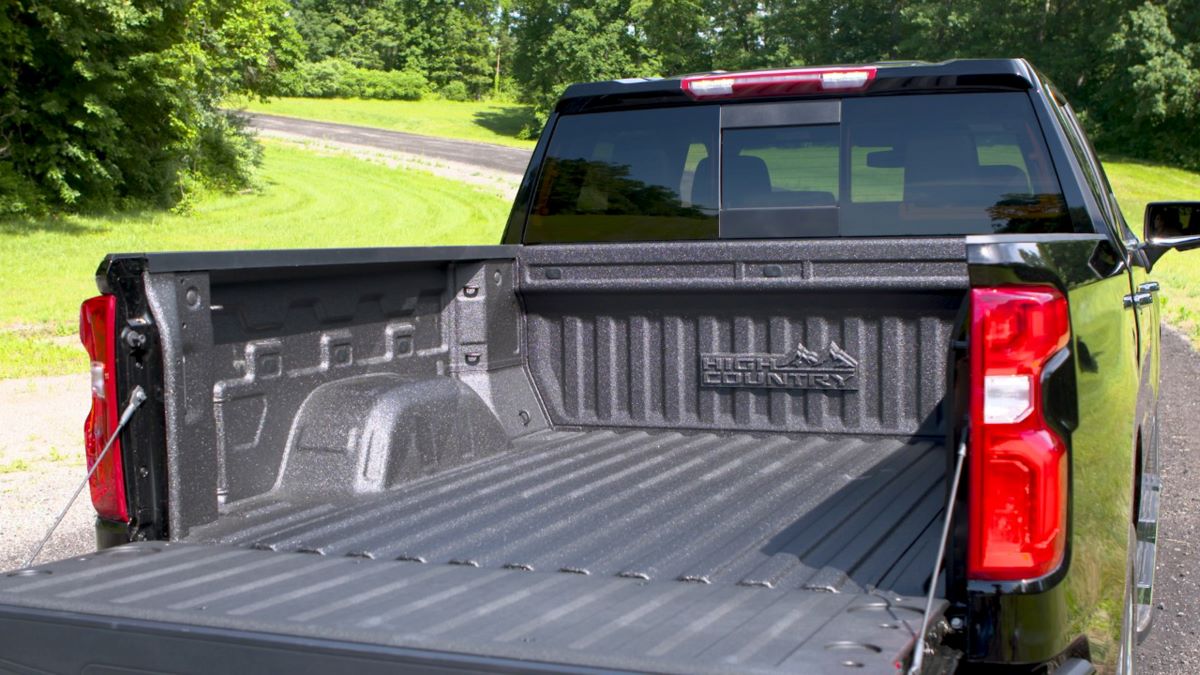
The Rebel trim retains the SO Hurricane six-cylinder as its standard powerplant, while the Limited and Longhorn trims continue to come with the more potent 540-hp High Output (HO) 3.0-liter Hurricane I-6.
On trims where the Hemi is offered, it will carry an additional cost—except for the Limited and Longhorn, where it will be a no-cost option. That makes the V-8 upgrade more accessible to buyers in the upper-tier trims.
Looking at the 2026 Ram 1500 powertrain offerings in detail: the Tradesman, Express, Warlock, and Big Horn/Lone Star trims will come standard with the 3.6-liter V-6 and offer both the SO Hurricane and Hemi V-8 as options.
The Laramie and Rebel trims will come standard with the SO Hurricane and offer the Hemi as an upgrade. The Limited and Longhorn trims will have the HO Hurricane standard but allow buyers to swap in the Hemi V-8 for no additional cost.
Meanwhile, the RHO and Tungsten trims will only be available with the HO Hurricane engine, and the Hemi V-8 will not be an option for those.
To get the Hemi’s 395 horsepower and 410 pound-feet of torque, buyers will need to pay $1,200—at least on trims where the SO Hurricane is standard. What’s still unclear is how pricing will be structured for models that come standard with the Pentastar V-6 and offer both the Hurricane SO and Hemi V-8.
If that $1,200 premium applies across the board, it would slot the Hemi slightly above the 420-hp, 469-lb-ft Hurricane SO in the powertrain hierarchy. For reference, the Hurricane SO currently costs $2,695 extra on the Tradesman, Express, Warlock, and Big Horn/Lone Star trims. On the Laramie and Rebel trims, where the SO is standard, opting for the Hemi will cost $1,200.
Order books are now open, and most 2026 Ram 1500 models equipped with the Hemi—except for the Rebel, which is scheduled to arrive later—are expected to land in dealerships by summer. That said, Ram has not yet released full pricing, paint color options, or detailed changes to trims for the 2026 model year, though those updates are expected soon.
3. Toyota Tacoma
The Toyota Tacoma’s bed may look practical, but it has tight channels along the bed rails and deep ridges in the floor.
These features often collect leaves, mud, and small stones. The tailgate design also has seams and indentations that hold onto dirt unless aggressively scrubbed or hosed with high pressure.
For the 2023 model year, Toyota has introduced two new appearance packages to the SR5 trim level of its Tacoma lineup. The SX package, which was previously offered on the SR trim, is now available for V-6 SR5 models in both Access Cab and Double Cab configurations.
This package includes black over-fenders, black wheels with black lug nuts, and additional black badging and trim accents scattered throughout the truck. Meanwhile, the Chrome package is available exclusively on SR5 Double Cab models equipped with the five-foot bed.
This package adds 18-inch polished wheels, chrome door handles, exhaust tips, and tailgate logo, along with a leather-wrapped shift knob. Enhancements to SR5 V-6 models now include Toyota’s Smart Key system and a power-adjustable driver’s seat, and all V-6-equipped Tacomas are now fitted with automatic dual-zone climate control.
On the higher-end Limited trim level, standard features now include a power-adjustable driver’s seat, the 8.0-inch infotainment touchscreen, Smart Key functionality, and, on Limited Double Cab models, a 360-degree camera.
For off-road enthusiasts, the TRD Pro model gets a new exclusive exterior color called Solar Octane for 2023, while the TRD Sport is now offered in a vibrant Electric Lime paint.
When it comes to pricing, the 2023 Toyota Tacoma starts at $30,095 and ranges up to $49,530, depending on the chosen trim and available options. The base SR trim is priced at $30,095, followed by the SR5 at $31,885. Another SR version is listed at $33,170, with an additional SR5 option at $34,960.
The TRD Sport starts at $37,005 and another variant is priced at $38,780. The TRD Off-Road comes in at $38,285 and another configuration is listed at $39,420. The Limited trim ranges from $42,850 to $45,925, while the Trail Edition is priced at $47,080. Topping the lineup is the TRD Pro, which is priced at $49,530.

For buyers looking to get the most out of the Tacoma, it’s smart to stick with what this truck does best—specifically, the TRD Off-Road Double Cab. This model comes standard with an electronic locking rear differential, and it’s recommended to opt for four-wheel drive.
Skipping the underpowered 159-hp four-cylinder base engine in favor of the more capable 278-hp V-6 is a wise move. Although choosing the manual transmission means losing access to some optional features, the six-speed manual provides a more engaging driving experience and avoids the clumsy behavior of the six-speed automatic.
This choice does come with a compromise, as the manual is only available with the shorter 5.0-foot cargo box—Toyota does not offer it with the 6.0-foot bed. Additionally, the Premium packages cannot be paired with the manual transmission.
Despite these limitations, every model includes 16-inch wheels, black over-fenders, a suite of driver assistance features, and an infotainment system that supports Apple CarPlay, Android Auto, and a subscription-based Wi-Fi hotspot. The Technology package is worth adding, as it upgrades the front lighting with LED elements and includes blind-spot monitoring, rear cross-traffic alert, and parking sensors.
Under the hood, the Tacoma’s optional 278-hp V-6 engine delivers 265 lb-ft of torque and offers solid performance and towing capabilities. On the other hand, the base 159-hp four-cylinder engine only manages 180 lb-ft of torque and feels noticeably underpowered, making it a poor choice.
The six-speed automatic transmission, when paired with either engine, tends to be uncooperative and detracts from the driving experience. That’s why the six-speed manual paired with the V-6 is the preferred configuration.
Even with the more powerful V-6, performance can feel sluggish when tethered to the automatic. Among the Tacoma’s many trims, the TRD Sport and Limited are geared more toward comfortable city driving, while the TRD Off-Road and TRD Pro are designed to excel in rougher terrain.
Still, none of the models offer quick acceleration. Although the Tacoma may not top the list for ride comfort or handling, it remains highly capable on trails and rugged back roads. It can be configured to suit off-road adventures or more relaxed on-road cruising. The Limited trim delivers a smoother and quieter ride than the off-road-focused variants.
Our experience with the Tacoma TRD Pro, particularly during drives out west, revealed that its lifted suspension, heavy-duty shock absorbers, and aggressive off-road tires make it one of the most capable off-road trucks available, though it sacrifices some comfort and ease of use for everyday driving.
4. Chevrolet Colorado
The Colorado’s steel bed has a traditional design with multiple nooks and recessed areas that don’t favor quick cleanups.
While a bedliner improves things somewhat, many owners find that fine debris often lodges near the wheel wells and stake pockets, especially when hauling gravel or yard waste.
Under the hood of the ZR2 lies the same engine that powers every 2025 Chevy Colorado: a turbocharged 2.7-liter four-cylinder, known as the TurboMax. It produces 310 horsepower and 430 lb-ft of torque. Like the engine, transmission options are limited to just one—a smooth-shifting eight-speed automatic.
In 2024, a lower-output version of this 2.7-liter engine was available in base trims, but Chevy has since removed it from the lineup. The days of V6 and turbodiesel options for the Colorado are long over, but this four-cylinder still proves more than capable.
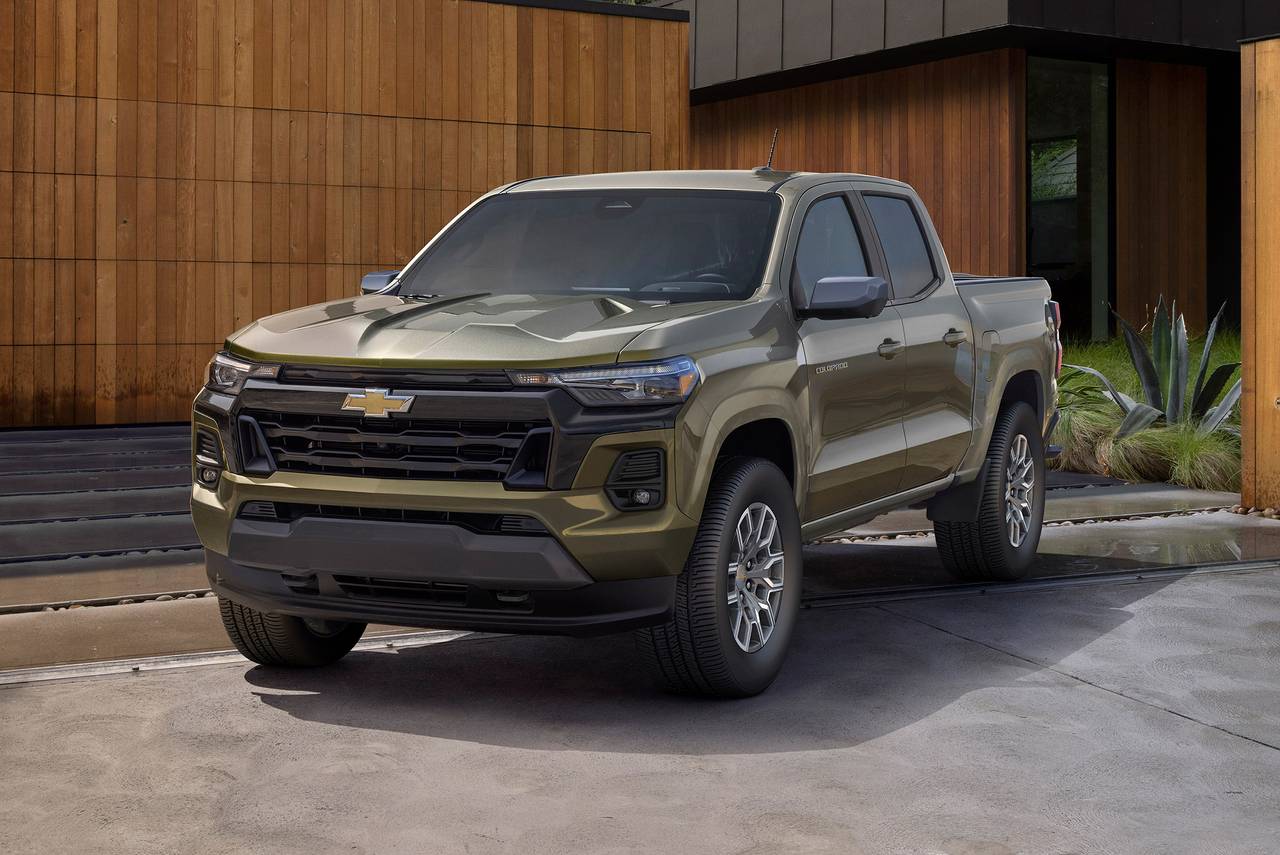
Put your foot down when the light turns green, and the Colorado responds with intent, accelerating confidently. The eight-speed automatic delivers crisp shifts with minimal jolt, keeping the ride smooth.
Thanks to the engine’s abundant torque, the transmission doesn’t fumble for the right gear, even on long uphill stretches. On the climb to my cabin retreat, the truck handled the elevation without any fuss.
Toyota’s Tacoma edges out the Colorado in power and torque thanks to the i-Force Max hybrid powertrain, and it posts better fuel economy figures as well.
The performance bump is modest, but the Tacoma’s hybrid system delivers more punch at low RPMs, giving it a more energetic feel overall. That edge makes it my top pick—but the Colorado’s four-cylinder is a very close runner-up.
5. Jeep Gladiator
The Jeep Gladiator brings unique off-road capability, but its bed design includes complex indentations and mounting points that trap debris.
The plastic-lined wheel wells inside the bed are tight and awkward to clean, especially after muddy off-road adventures. Cleaning often requires tools or pressure washing to get into every crevice.
When evaluating a pickup for utility and maintenance, bed cleanout should be on your checklist especially if you regularly haul messy cargo.
The Jeep Gladiator is equipped with a 3.6-liter V-6 engine that delivers 285 horsepower and 260 pound-feet of torque, paired with a standard eight-speed automatic transmission.
Every Gladiator comes fitted with a 5.5-foot truck bed. Compared to the standard Wrangler, the Gladiator features an additional 19.4 inches between the front and rear wheels. According to Jeep, this extended wheelbase is designed to enhance the vehicle’s ride quality and handling.
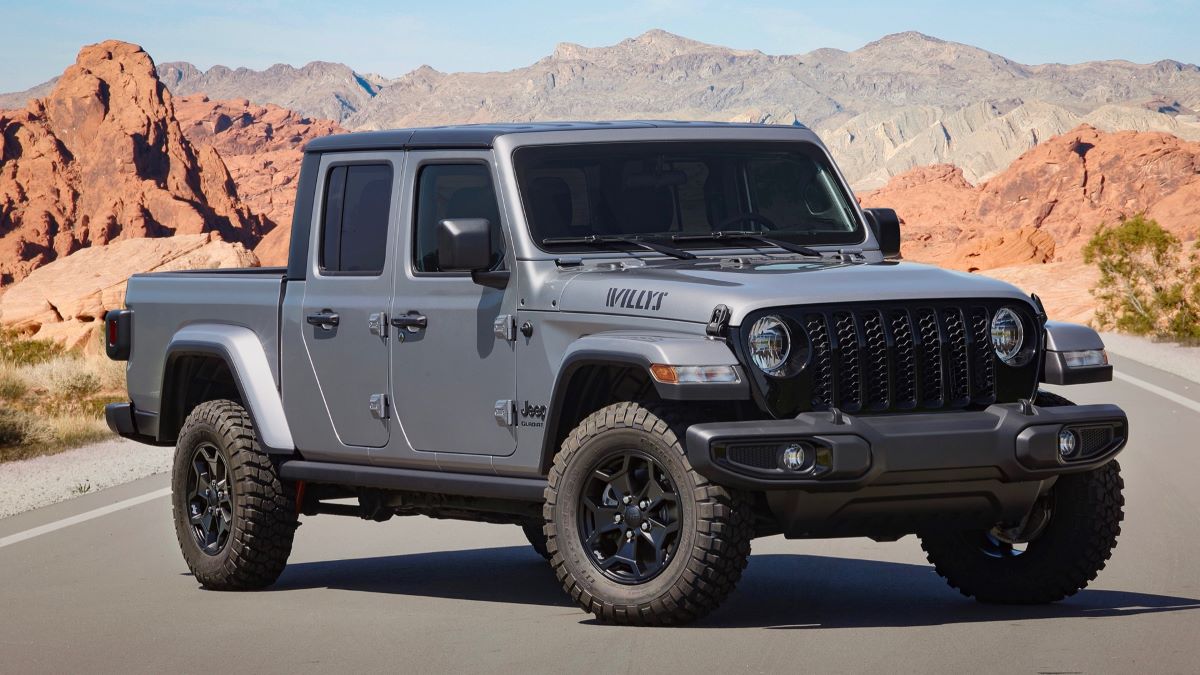
Based on our experience driving multiple versions of the Gladiator, we can confirm that—regardless of Jeep’s claim—it largely behaves like a Wrangler behind the wheel. On paved roads, the steering feels imprecise and the ride tends to be unsettled over rough surfaces.
Nevertheless, these traits are intrinsic to the Gladiator’s appeal, contributing to its identity as both a capable pickup and a serious off-road machine. For Jeep loyalists, the truck’s off-road credentials matter most.
These include a wealth of skid plates, specialized rock-crawling axle ratios, and the ability to ford up to 30 inches of water. Additionally, its impressive ground clearance and favorable approach and departure angles make it well-suited for tackling uncharted terrain.
Trucks like the Honda Ridgeline and Ford F-150 simplify your post-haul cleanup routine, while models like the Tacoma and Gladiator may test your patience.
Opting for factory-applied spray-in liners or composite beds can make a big difference, even on trucks with less-than-perfect designs.

